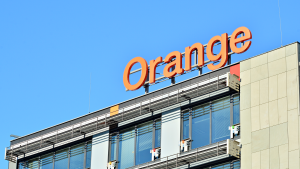However, dividend stocks can be pricey, creating an initial entry barrier for investors simply lacking the funds. The good news is that not all dividend stocks are pricey. That’s the point of this article — identifying high-yield dividend stocks under $50.
Investors who direct their capital into these shares, position themselves to reap multiple rewards. First of all, these lower-priced dividend shares have the potential to appreciate in value, creating immediate returns. Of course, they also include dividends above 5%, creating a potent combination for building wealth.
Pfizer (PFE)

Pfizer (NYSE:PFE) represents one of the best opportunities for dividend investors with just a bit of patience. The stock continues to be maligned by the markets following the end of the pandemic and the firm’s windfall vaccine development.
The company has gone from one reporting $100 billion in annual revenues to one expected to remain under $60 billion in sales for the next few years. Unsurprisingly, share prices have fallen rapidly.
The result is that the firm’s dividend — unchanged over that period — currently yields more than 6%. So, an investor who places their capital in Pfizer at the moment will be rewarded with substantial dividend income as the company pivots.
The analysts charged with giving PFE shares an evaluation believe it should rise to between $32 and $36 moving forward. The stock has breakout potential following its acquisition of Seagen and has a deep pipeline of cancer therapeutics and other drugs that make it attractive.
It’s going to take time for Pfizer to turn around, but in the meantime, it’s an easy choice to receive 6% dividends.
AT&T (T)

AT&T (NYSE:T) Draws a lot of comparison to other telecommunications stocks including Verizon (NYSE:VZ) and T-Mobile (NASDAQ:TMUS).
Verizon is an especially strong comparison for the purposes of this article. Both firms trade for under $50, and each includes a dividend exceeding 5%. Neither firm is expected to grow quickly on a top-line basis in the immediate future. That means each will likely continue yielding substantial dividends as their share price remains muted.
However, AT&T may be the better choice for those seeking price appreciation. I say that because Verizon has grown in 2024 while T stock has not. It also continues to be undervalued based on its price-to-earnings ratio. That shouldn’t be surprising. Investors are hesitant to reward AT&T, given its current sluggish growth.
So, invest now under the assumption that the company will continue to pay dividends. It certainly should given the healthy payout ratio. Bank the dividends or reinvest them in T shares and hope the company can find growth in its competitive industry, which will create share price appreciation.
Bristol-Myers Squibb (BMY)

Bristol-Myers Squibb (NYSE:BMY), like many other firms, is facing issues due to the higher rate environment. The company is on the hook for $2.8 billion in bonds this year. The higher rate environment would make it more expensive to refinance those bonds.
In turn, the company has faced downgrades from analysts concerned about its debt. Yet, Bristol-Myers Squibb exceeded guidance in the 4th quarter, suggesting that Wall Street’s concerns are overblown.
Bristol-Myers Squibb’s debt situation will play out over time. Investors simply can’t know what the outcome will be at this point. However, investors should also note that the company has positioned itself for growth.
The company announced three multibillion-dollar acquisitions at the end of 2023. Those acquisitions better position the company in relation to cancer treatments and mental health therapeutics. The company is well-positioned to grow in the future. In the meantime, take advantage of its income opportunity through a dividend yielding 5.5% as shares remain muted and yields are high.
British American Tobacco (BTI)

British American Tobacco (NYSE:BTI) is one of several attractive tobacco/nicotine stocks available to dividend investors currently. There’s a lot to like about the company and many reasons to believe that it can appreciate, as analysts expect, by 30%+. BTI shares are also undervalued at the moment, and many believe a bottom is near.
The company benefits from a 19% free cash flow, meaning that its dividend, currently yielding 10%, remains covered. The company also owns 25% of fast-growing Indian conglomerate ITC, valued at $66 billion. The company is concurrently selling some of those shares in order to buy back some of its own undervalued shares. It’s an excellent example of selling assets that are highly valued while also buying cheap assets with those proceeds.
That’s a clear example of British American Tobacco being well-managed internally. Meanwhile, other signs that should attract investors. Namely, the fact that the company’s pivot into e-cigarettes and non-combustible nicotine delivery is working.
Brookfield Infrastructure Partners (BIP)

Brookfield Infrastructure Partners (NYSE:BIP) is a diversified infrastructure firm owning a portfolio of assets across growth areas.
The company’s assets include utilities, transportation, midstream energy and data infrastructure that underpin much of the economy. Investing in the company exposes one to a dividend that currently yields 5.5%.
Brookfield Infrastructure Partners currently offers a strong dividend with the anticipation of future price appreciation. Shares currently trade for $29, but the low Wall Street estimate suggests that those shares should rise in value to $34, with the more likely case being $40. As with most high-yield dividend stocks, investors benefit from income at the moment with the anticipation of price appreciation in the future.
The company recently agreed to acquire shipping container firm Triton for $13.3 billion. The company is the largest global shipping container lessor. Brookfield Infrastructure Partners will continue to draw interest as the need for supply chain and infrastructure upgrades continues to gain notoriety.
Orange (ORAN)

Orange (NYSE:ORAN) is one of the better-known telecommunications stocks and firms across Europe and Africa. However, it isn’t particularly well known in the United States. That’s a shame because it is a good firm and stock overall.
The narrative underpinning investment in Orange is fairly straightforward: The company is fundamentally strong and offers income to investors, making it a set-it-and-forget-it kind of investment.
Investing in Orange comes with a dividend yielding 6.7%. It’s a very healthy yield that can turn an average investment into a very strong investment.
Anyway, the point here was that Orange is a fundamentally strong company overall. That truth is evident in its most recent earnings report, showing revenues increasing by 3.5% while earnings growing by 4%. And it also looks like the company has shrewdly maintained business segments that produce earnings while smartly discontinuing those that don’t. Orange shares trade for approximately $11, representing a low price entry point into the relatively stable telecommunications sector and income opportunities therein.
ASE Technology (ASX)

ASE Technology (NYSE:ASX) is a Taiwanese semiconductor packaging firm offering a dividend of 5.4% to investors.
Investors are well aware of the ongoing chip opportunity due to the emergence of artificial intelligence. Firms everywhere are going to require ever greater quantities of chips in order to meet AI demand. In turn, chip packaging firms also have an excellent opportunity to grow.
However, that hasn’t exactly been the case for ASE Technology recently. Instead, revenues grew by a modest 2.8% during the 1st quarter on a year-over-year basis. Despite the modest growth ASE technology has seen, its computing revenues increased by 50% over that period.
It wouldn’t be surprising if the company pivots to take advantage of that opportunity. Artificial intelligence is perhaps the biggest opportunity ever. Computing revenues accounted for 8% of overall business a year ago, rising to 12% during the most recent quarter. If ASE technology directs more resources toward the opportunity, it could grow rapidly.
On the date of publication, Alex Sirois did not hold (either directly or indirectly) any positions in the securities mentioned in this article. The opinions expressed in this article are those of the writer, subject to the InvestorPlace.com Publishing Guidelines.
Alex Sirois is a freelance contributor to InvestorPlace whose personal stock investing style is focused on long-term, buy-and-hold, wealth-building stock picks. Having worked in several industries from e-commerce to translation to education and utilizing his MBA from George Washington University, he brings a diverse set of skills through which he filters his writing.
More From InvestorPlace
- The #1 AI Investment Might Be This Company You’ve Never Heard Of
- Musk’s “Project Omega” May Be Set to Mint New Millionaires. Here’s How to Get In.
- It doesn’t matter if you have $500 or $5 million. Do this now.
